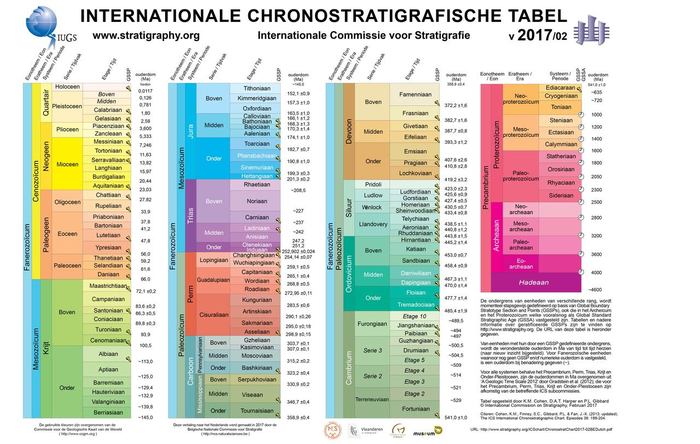
Answer
Dear Manuel
The determination of the age of sedimentary rocks is in most cases done by comparing the fossil content and other features of a rock with the typical features of the time units of the geologic time scale. The geological time scale links the relative time scale based on fossils with a numerical (‘absolute’) time scale, which is based on radiometric dates and reversals of the Earth’s magnetic field, among other things. These radiometric dates are in turn based on the decay of parent radioactive isotopes into daughter isotopes of elements such as uranium and rubidium that are trapped in crystals of magmatic rocks in particular. These are rocks that are formed by cooling from a liquid magma, so those crystals are, for example, in volcanic ash or in solidified lava. Since the magma is formed in the earth, the composition of the atmosphere has no influence on the composition of the rocks.
Carbon dates (C-14 dates) are a special case, as they depend on the formation of radioactive C-14 in the atmosphere. However, those dates are not applied to rocks, but to carbonaceous materials such as plant and animal remains less than 60,000 years old. Unfortunately, older material cannot be dated with C-14 because its half-life is only 5730 years and after more than 10 half-lives there is hardly any C-14 left in the material for accurate dating. C-14 dating is therefore mainly used in archaeological and Late Quaternary research.
You can download a figure of the full geologic time scale from the website of the International Commission on Stratigraphy. This is available in various languages, including no less than 2 Dutch versions, 1 for the Netherlands and 1 for Flanders. The difference lies in the exits of the floors. In the Netherlands, according to the French tradition, they still end in -ien, while in Flanders they have been Dutchized to -ian. So there is formally an Ypresian Etage and an Ypresien Etage for the period named after Ypres in West Flanders. To each his own!
On the extra link you will find an earlier question and answer about dating rocks with fossils.

Answered by
prof. Robert Speyer
Geology – Paleontology – Paleoclimatology. You study geology in Leuven!

Old Market 13 3000 Leuven
https://www.kuleuven.be/
.